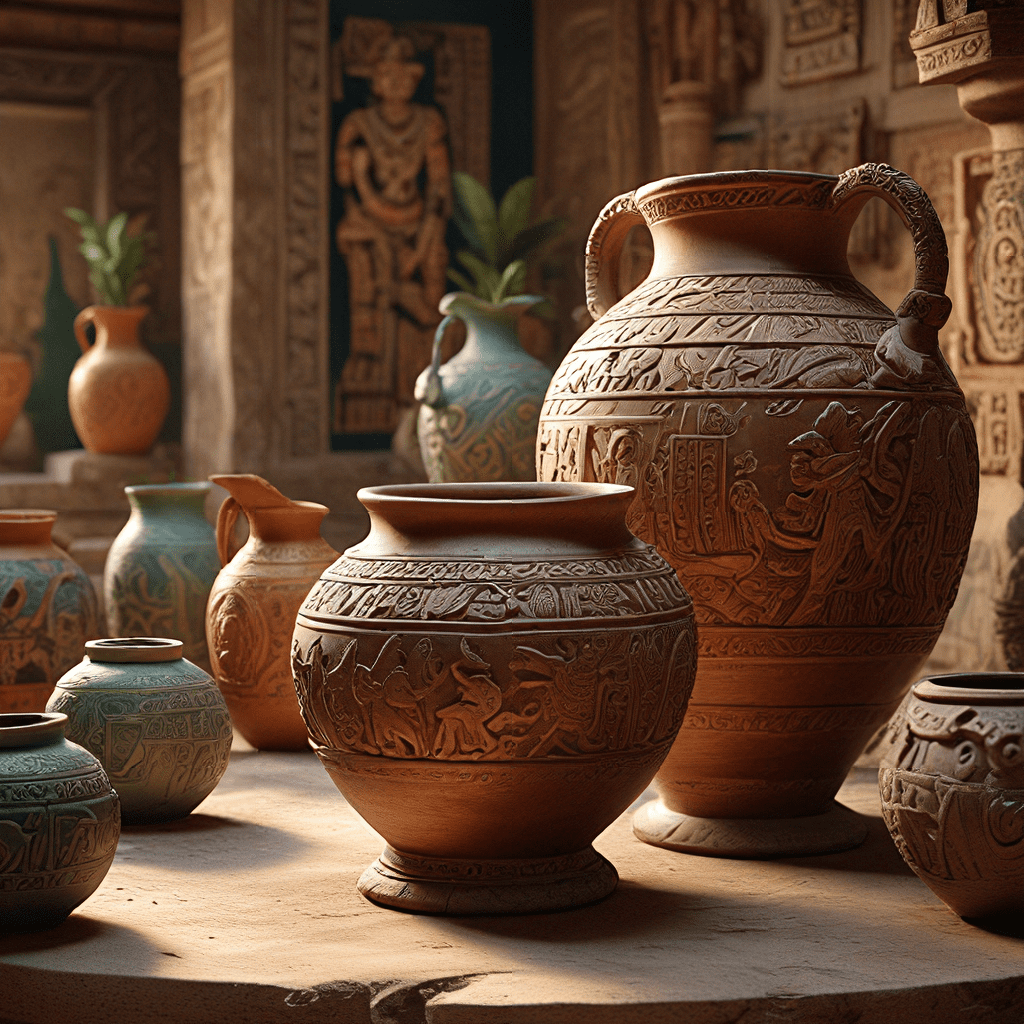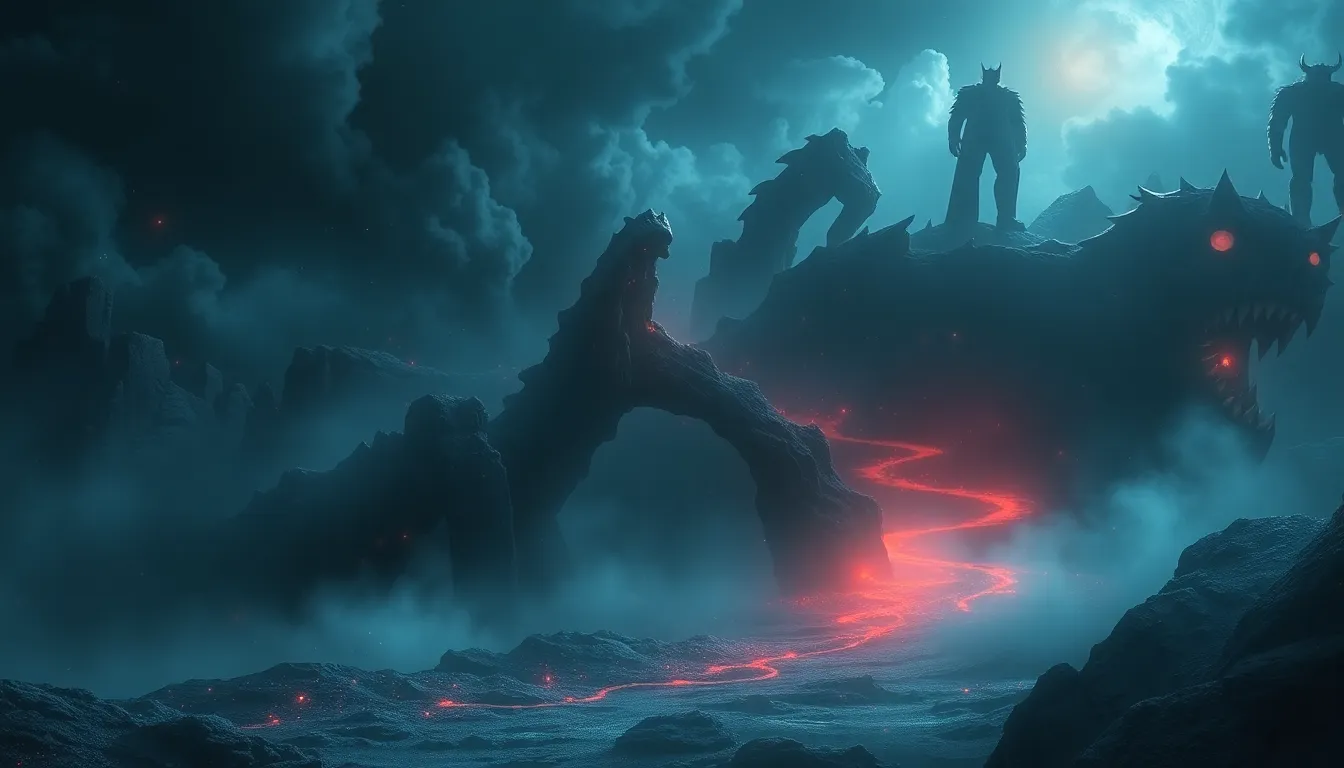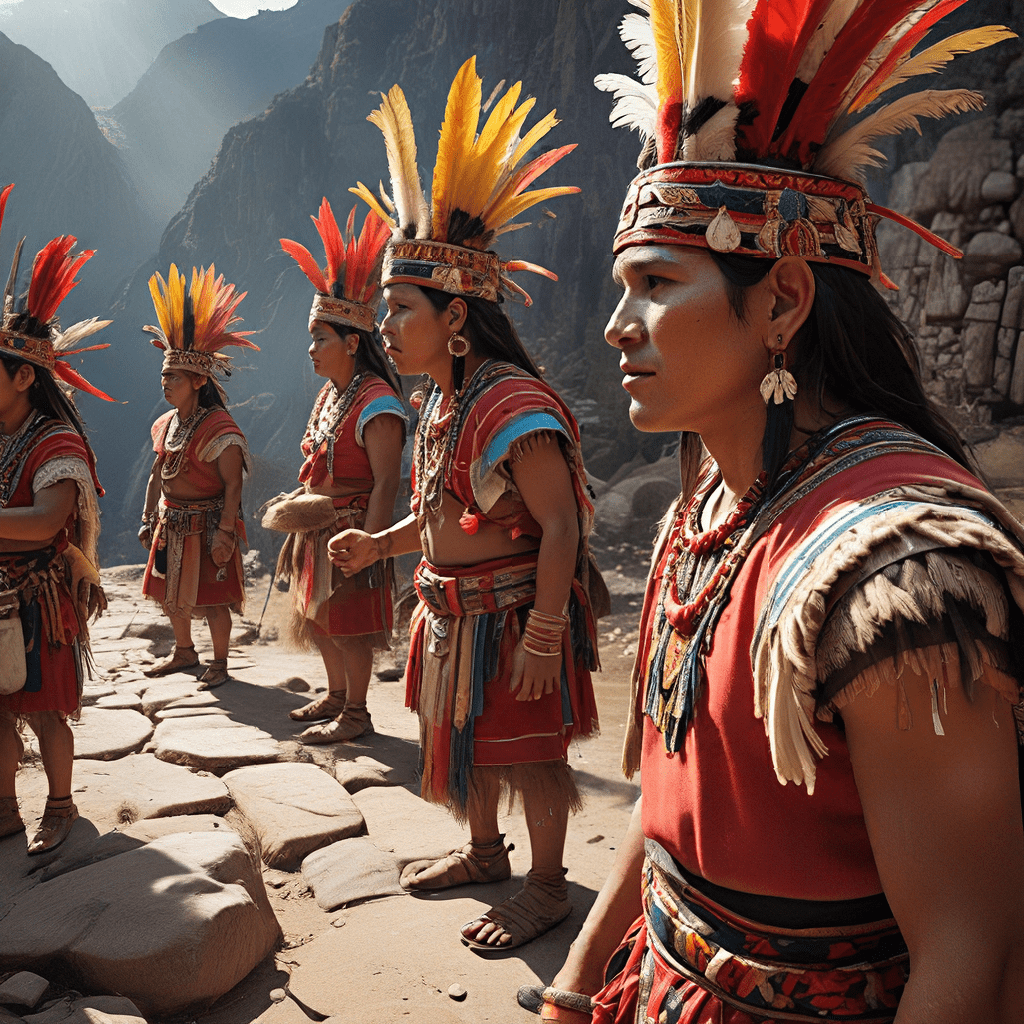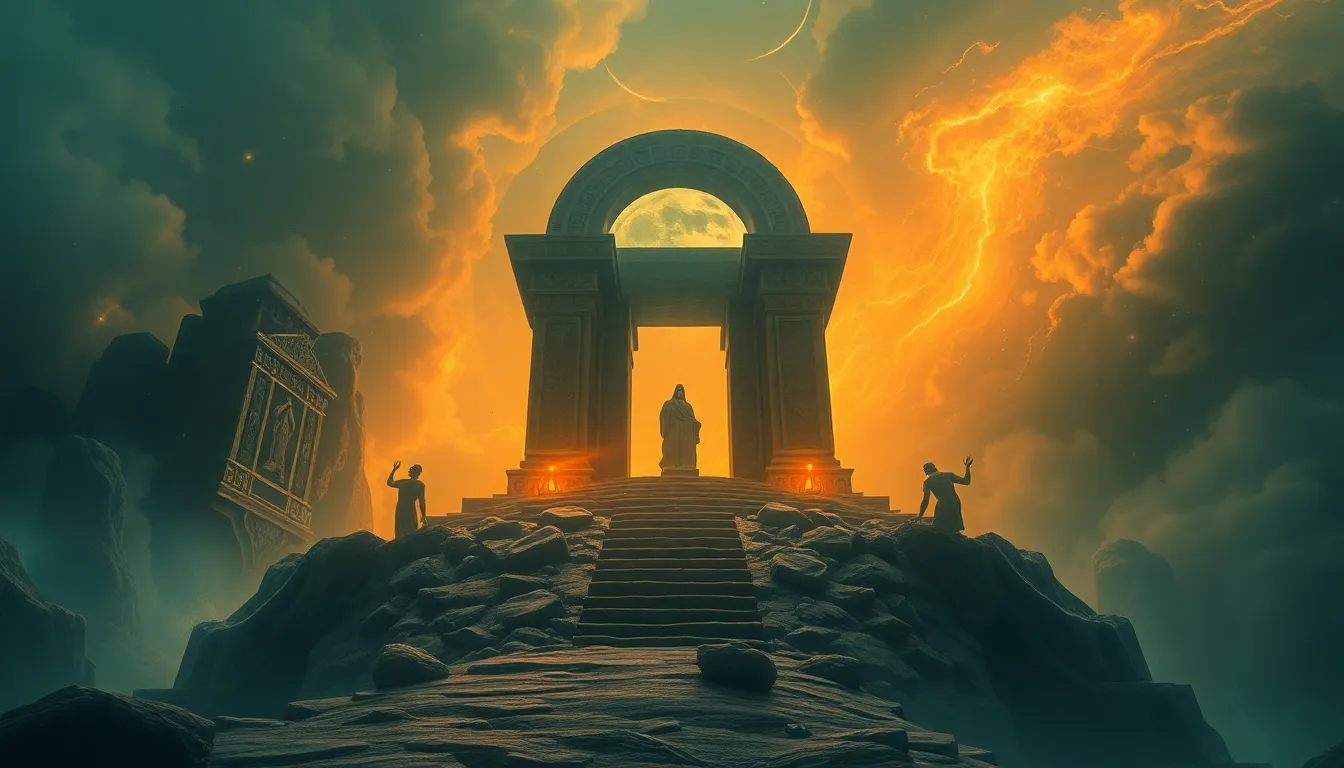Mayan Mythological Pottery: Vessels of Myth and Magic
Introduction: A Glimpse into the Mythic World
The ancient Mayan civilization, renowned for its intricate art, architecture, and complex belief systems, held a profound reverence for the natural world and the sacred realms beyond. Central to their cultural tapestry was a rich mythology populated by deities, mythical creatures, and ancestral spirits, all intricately woven into the fabric of their daily lives. This rich tapestry of myths found its expression in various forms, including the creation of exquisite pottery, which served as both functional vessels and canvases for表达 the vibrant narratives of their spiritual beliefs.
2. The Divine Potters: Creation Myths and the Origins of Pottery
In the realm of Mayan mythology, the origin of pottery is attributed to the divine potters, known as the "Bacabs". These deities, depicted as four brothers residing at the cardinal points of the cosmos, were believed to have shaped the world from clay, breathing life into humanity and bestowing upon them the gift of pottery. The act of creation, symbolized by the manipulation of clay, held deep significance in Mayan cosmology, representing the transformative power of the divine and the interconnectedness between the physical and spiritual realms.
3. The Underworld and the Journey of the Soul: Vessels of Transition
The Mayan underworld, known as Xibalba, was a realm of darkness and trials, believed to be the destination for the souls of the deceased. The journey to Xibalba was fraught with perils and challenges, and pottery played a crucial role in this transition. Vessels adorned with images of underworld deities and symbols of transformation served as symbolic guides for the soul, offering protection and guidance during its perilous descent. These vessels, often placed within tombs, were believed to aid the deceased in navigating the treacherous underworld and attaining their final resting place.
4. The Power of Symbolism: Deities, Animals, and Rituals
Mayan pottery is a treasure trove of symbolism, providing insights into the complex belief systems and rituals of this ancient civilization. Deities, such as the Maize God, the Rain God, and the Death God, are frequently depicted on vessels, reflecting their profound influence on Mayan life and their connection to the natural world. Animals, imbued with symbolic meaning, also feature prominently, with jaguars representing power, owls symbolizing wisdom, and monkeys signifying fertility. Ritual scenes depicted on pottery further illuminate the sacred practices of the Mayans, offering glimpses into their ceremonies, offerings, and invocations to the gods.
6. The Role of Shamans and Divination: Vessels of Prophecy
In Mayan society, shamans played a pivotal role as intermediaries between the physical and spiritual realms, wielding significant influence in matters of healing, prophecy, and communication with the gods. Pottery served as an essential tool in their divinatory practices, providing vessels for channeling spiritual guidance and deciphering the will of the deities. Specific types of vessels, adorned with symbolic motifs and charged with ritualistic power, were utilized in divination ceremonies. Shamans would interpret patterns and figures emerging within these vessels, seeking insights into the future, diagnosing illnesses, and resolving disputes. These vessels, imbued with sacred knowledge and the power of prophecy, held immense significance in guiding the decisions and shaping the destiny of the Mayan people.
7. Theories and Interpretations: Unveiling the Mysteries
The rich symbolism and intricate narratives depicted on Mayan pottery have captivated scholars and enthusiasts for centuries, sparking ongoing debates and diverse interpretations regarding their meaning. While some interpretations focus on the literal depiction of myths and rituals, others delve deeper, exploring metaphorical meanings and hidden messages embedded within the imagery. Some theories emphasize the astrological significance of certain symbols, linking them to celestial cycles and cosmic events. The enigmatic nature of Mayan mythology leaves ruang for multiple interpretations, each offering new perspectives on the beliefs and values that shaped this remarkable civilization.
8. The Legacy of Mayan Pottery: A Timeless Art Form
The enduring legacy of Mayan pottery extends far beyond its functional and ceremonial purposes. As a tangible expression of their mythology, beliefs, and artistic mastery, these vessels hold immense historical, cultural, and aesthetic value. They continue to inspire contemporary artists, archaeologists, and scholars, providing invaluable insights into the rich tapestry of Mayan civilization. Museums and private collections worldwide hold these artifacts as treasures, preserving their stories and captivating audiences with their beauty and symbolic depth. The legacy of Mayan pottery endures as a testament to the creativity, spirituality, and enduring influence of this ancient civilization.
Frequently Asked Questions (FAQs)
1. What materials were used to create Mayan pottery?
Mayan pottery was typically made from a type of clay known as "kaolin," which was mixed with other materials such as sand and temper to enhance its durability.
2. What are the most common types of Mayan pottery?
Common types of Mayan pottery include cylindrical vessels, tripod bowls, effigy vessels, and incensarios (incense burners).
3. Where can I see examples of Mayan pottery?
Mayan pottery can be found in museums and archaeological sites throughout Mexico, Central America, and other parts of the world. Notable museums with extensive collections include the National Museum of Anthropology in Mexico City, the Peabody Museum of Archaeology and Ethnology at Harvard University, and the British Museum.
4. How can I learn more about Mayan mythology?
There are numerous resources available for learning about Mayan mythology, including books, articles, websites, and documentaries. Some recommended resources include "The Popol Vuh," the "Dresden Codex," and the works of Mayanist scholars such as Linda Schele and David Freidel.
5. Are there any modern interpretations of Mayan mythology?
Yes, many contemporary artists, writers, and filmmakers draw inspiration from Mayan mythology in their works. Examples include the film "Apocalypto" by Mel Gibson and the novel "American Gods" by Neil Gaiman.




